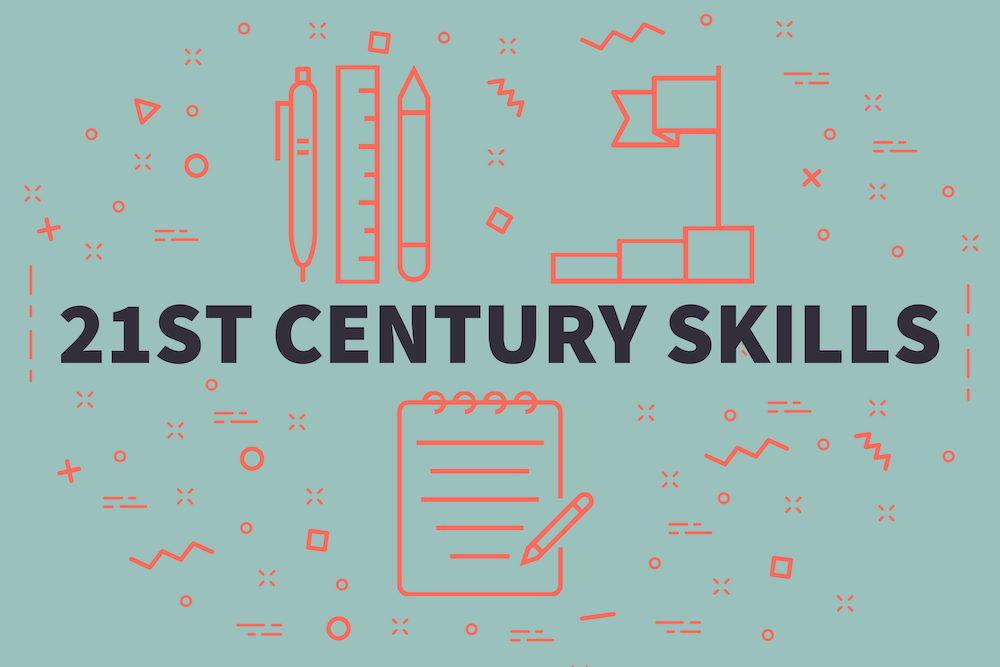Introduction
“The term 21st-century skills refer to a broad set of knowledge, skills, work habits, and character traits that are believed— by educators, school reformers, college professors, employers, and others—to be critically important to success in today’s world.” In simple terms, 21st Century Skills refer to the skills that are required to enable an individual to face the challenges of the 21st-century world that is globally active, digitally transforming, collaboratively moving forward, creatively progressing, seeking competent human-resource and quick in adopting changes.
{tocify} $title={Table of Contents}
Need for 21st Century Skills
- “Development of life skills such as critical thinking skills, interpersonal communication skills, negotiation/ refusal skills, decision making/problem-solving skills and coping, and self-management skills is/are also very critical for dealing with the demands and challenges of everyday life.”
- “The process of acquiring a sense of self is linked to physiological changes and also learning to negotiate the social and psychological demands of being young adults. Responsible handling of issues like independence, intimacy, and peer group dependence is concerned that needs to be recognised and appropriate support be given to cope with them.”
- “It is important to recognize that adolescents need social and emotional support that may require reinforcement of norms of positive behaviour, development of life skills essential to cope with the risky situations that they encounter in their lives, manage peer pressure and deal with gender stereotypes.”
- Health & Physical Education has the potential to motivate learners to acquire generic skills like agility, balance coordination, and life skills, especially critical and creative thinking, communication, problem-solving, decision making, management of emotions, and stress.
You might like: 9 Creative Teaching Techniques for Teachers and Trainers
7 Survival Skills That Students Must Be Acquired With
Tony Wagner stressed that students need seven survival skills to be prepared for twenty-first-century life, work, and citizenship:
- Critical thinking and problem-solving.
- Collaboration and leadership
- Agility and adaptability
- Initiative and entrepreneurialism
- Effective oral and written communication
- Accessing and analysing information
- Curiosity and imagination
Categories of 21st Century Skills
Based on the historical development of 21st Century Skills, it can be stated that 21st-century skills broadly consist of three main skill sets or 3Ls:
- Learning skills
- Literacy skills
- Life skills
Learning Skills (the 4Cs):
These skills teach students about the mental processes required to adapt and improve upon a modern work environment.
The 4C Skills:
- Critical Thinking
- Creativity & Innovation
- Collaboration
- Communication.
Literacy Skills (IMT)
These skills focus on how students can discern facts, publishing outlets, and the technology behind them. There’s a strong focus on determining trustworthy sources and factual information to separate it from the misinformation that floods the Internet.
The IMT Skills:
- Information Literacy
- Media Literacy
- Technology Literacy.
Life Skills (FLIPS)
These skills take a look at intangible elements of a student’s everyday life. These intangibles focus on both personal and professional qualities.
The FLIPS Skills:
- Flexibility and Adaptability
- Leadership and Responsibility
- Initiative and Self Direction
- Social and Cross-Cultural Interaction.
The 21st Century Skills Explained
As discussed at the beginning of this article, 21st Century Skills refer to the skills that are required to enable an individual to face the challenges of the 21st-century world.
A brief explanation of the 21st Century Skills below would be helpful to you.
$ads={2}
Critical Thinking
Thinking is a skill in itself. What we require is:
- a set of information and beliefs, generating and processing skills, and
- the habit, based on intellectual commitment, of using those skills to guide behaviour.
Thinking is the processing of thoughts to consider or reason about something. It is a thinking skill when thoughts are channelized and used properly to understand, analyse, interpret, and reach a conclusion. Anything, when used systematically, can do wonders; the same goes with thinking.
Creativity and Innovation
Creativity is the tendency to generate or recognize ideas, alternatives, or possibilities that may be useful in solving problems, communicating with others, and entertaining ourselves and others.
Communication
The process of Communication needs three things: Message, Sender, and Receiver/ Recipient.
Information, Media, and Technology Literacy
Information, both from traditional sources like Books, Newspapers, etc, and other digital sources like Internet sites, social media, Apps, etc. is to be used effectively and judiciously by students. The teachers must see carefully that information available is used at all levels of Bloom’s Taxonomy. They need to be able to remember, understand, apply, analyze, evaluate the given information and create new information.
Leadership and Responsibility
Leadership is the life skill that helps one learn the art of building relationships within teams, defining identities and achieving tasks effectively. Responsibility includes demonstrating integrity and ethical behaviour by the students towards building a safe and positive classroom environment.
Initiative and Self-direction
Initiative provides an opportunity to act or take charge before others. Self-direction is the ability to set goals related to learning, plan for the achievement of those goals, independently manage time and effort, and assess the quality of the learning experience.
Productivity and Accountability
Productivity is prioritizing, planning, and applying knowledge and skills to make decisions to enhance the quality of work in an ever-changing environment. Accountability is demonstrating personal integrity through appropriate resource allocation and effective time management.
Social and Cross-cultural Interaction
Group work is a great way for students to work hands-on with other students who are different from themselves. Also, children will know when it is appropriate to listen and when to speak. It can be applied in the classroom by dividing the students into groups to do classwork. When grouping students, teachers should create socially and culturally diverse groups. Teachers should incorporate this group work into their lesson plans, forcing students to interact in order to complete their assignments. This makes students adaptive, flexible, appreciative of diversity
You May Also Like 👇
Loading...

